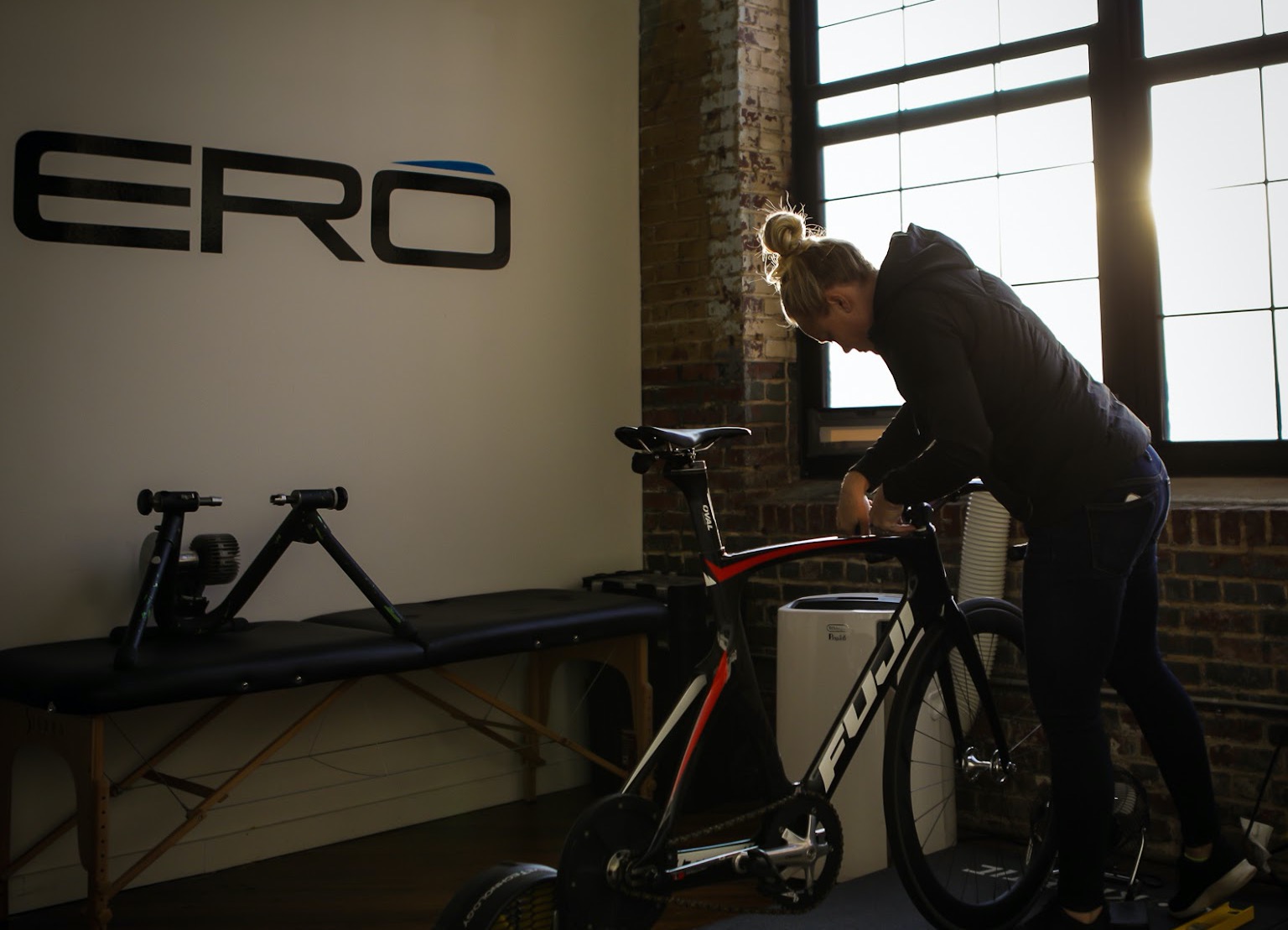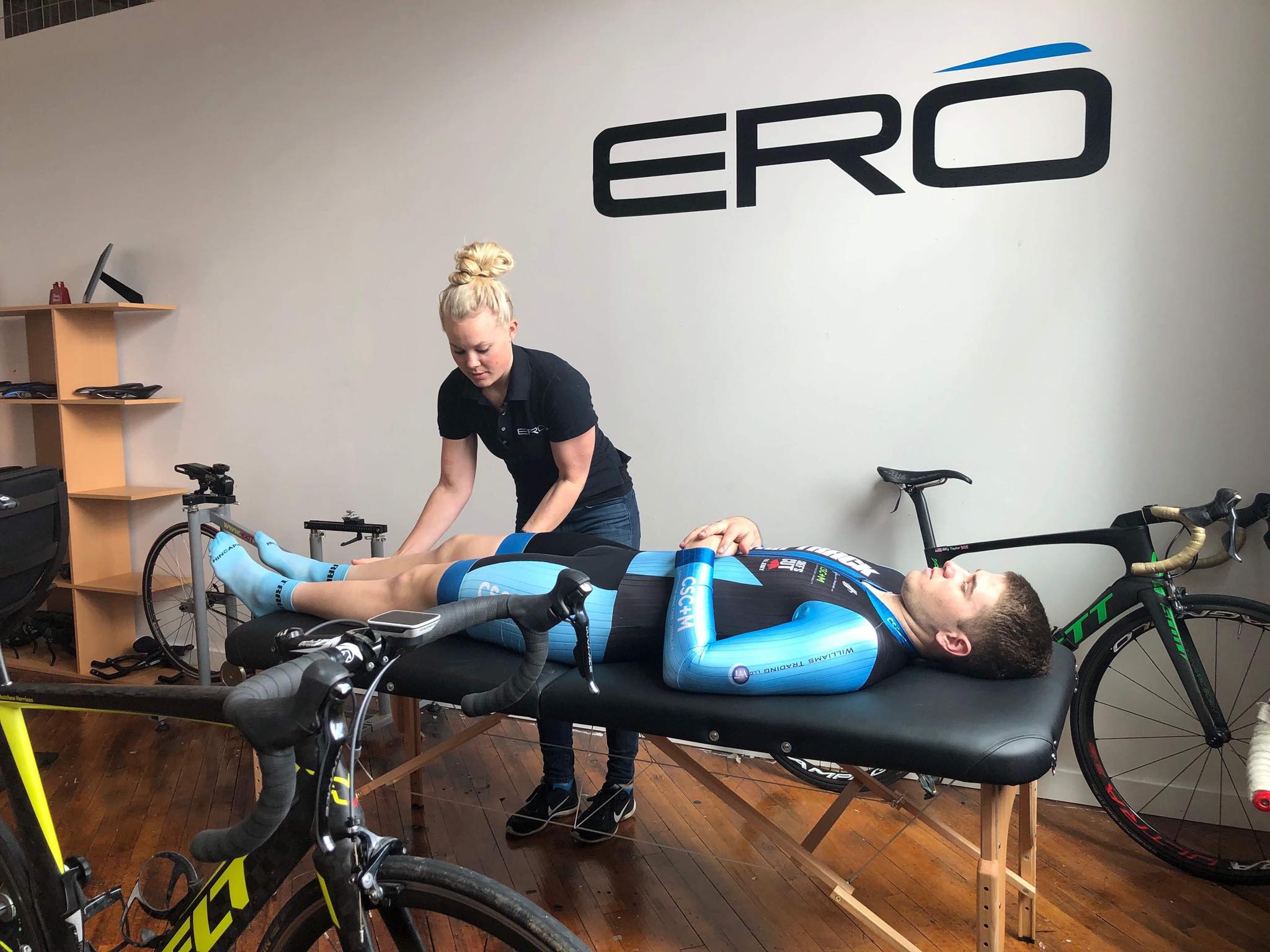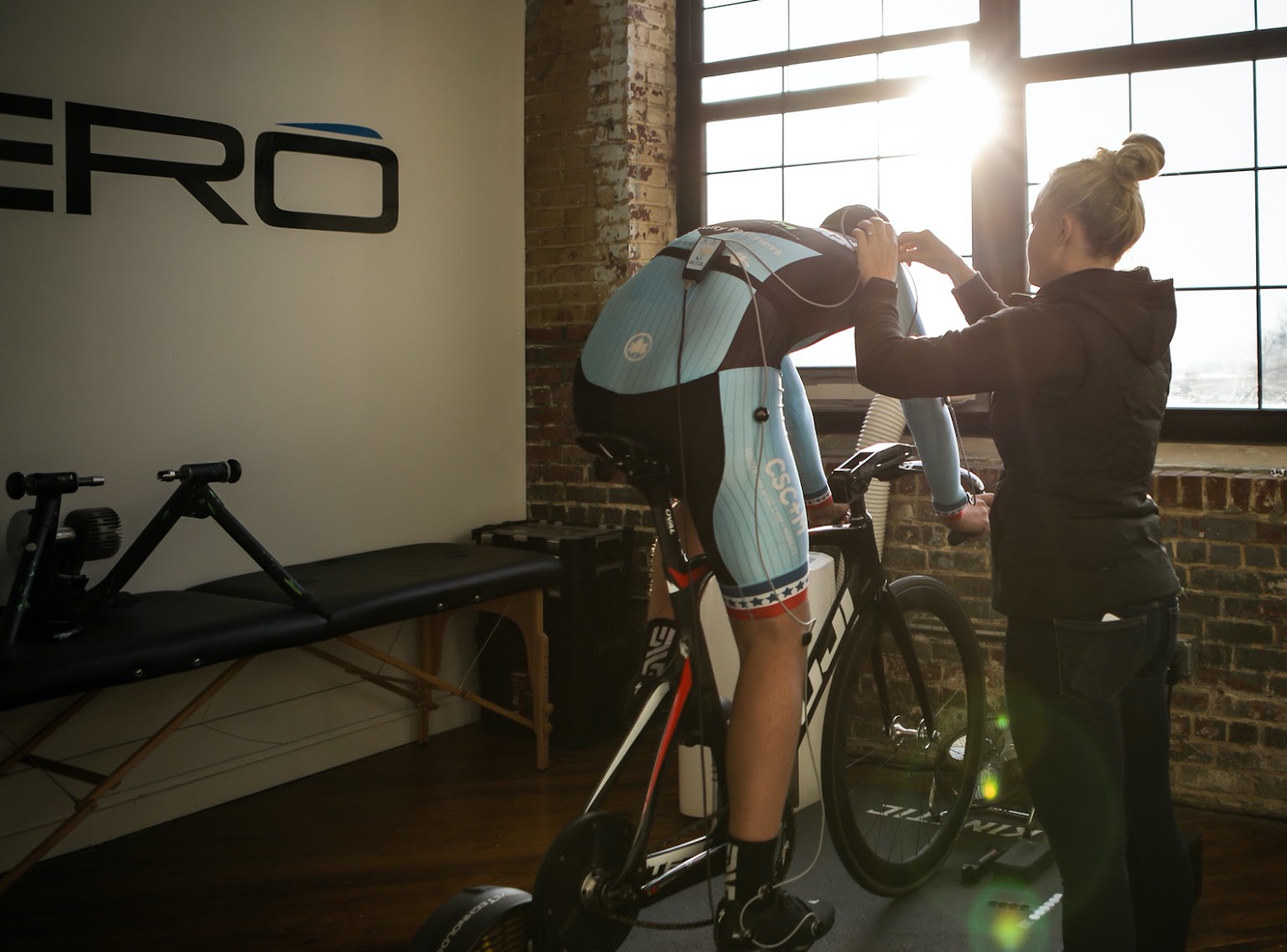How to Increase your Speed, Power and Comfort with a Proper Bike Fitting
Elite bike fitting expert Missy Erickson from ERO Sports opens the hood on the art and science of a proper bike fitting.

A successful run and swim is largely dependent on the athlete’s physical form and technique. In cycling, speed and power are achieved through proper form, which is a byproduct of how the athlete fits on the bike.
Just as each person is unique (height, weight, leg length, etc.), bikes are also unique and vary from brand to brand, component to component (saddles, handlebars, shoes). All of these variables need to be dialed in and this is where a good bike fitting comes into play.
Missy Erickson runs the east coast location for the world renowned bike fitting organization, ERO Sports. Based in Mertztown, PA near The Velodrome at The Valley Preferred Cycling Center, she sees all calibers of athletes. “I work with an insane number of people from beginners to Olympic gold medalists.”
A former National Team and 2016 Olympic Long Team member, Erickson is fully aware of the benefits a bike fitting can have on performance. While training with the USA National Team in 2012, Erickson met Jim Manton, the elite bike fitter and Founder of ERO Sports. Upon seeing Erickson ride for the first time, she recalls Manton telling her that he couldn’t understand how she was as fast as she was because her bike fit was awful.
“At that point, the closest thing I had to a bike fit was my coach saying, “I think your seat can go up.” I assumed all the pain and discomfort was just how it was supposed to be,” said Erickson. Unfortunately this understanding of bike fitting is true for far too many athletes.
After getting her first fit with Manton, she shared, “I couldn’t believe how much more powerful and faster I was.”
This experience eventually led Erickson to join ERO in 2015, working out of the Velo Sports Center in Carson, home of ERO Sports. In 2016 she moved to Pennsylvania, where she opened up its second location. Her passion has morphed into a successful career, and for the last six years, Erickson has fitted countless athletes, including the entire Tokyo 2020 (2021) Canadian Olympic Track Sprint Program.
She shares her breakdown of the importance of a proper bike fit..

What to bring to your bike fit
Before you even show up to a fitting, you will have some homework to do. In the rides leading up to your appointment, pay attention to the pains and discomforts you feel. The more you can communicate these issues to your bike fitter, the better equipped they will be to help you. Shared Erickson, “Remember…there’s no such thing as normal pain!”
In addition, you will need to bring the following to your fitting:
- Bike
- Tight fitting cycling clothing
- Cycling bibs or shorts
- Cycling jersey or tech T-Shirt
- Socks (if you typically wear them while riding)
- Cycling shoes (if you have them)
- Helmet
- Water bottle/hydration – your fit will be a work out!
- Anything else you would typically need for a ride
- NOTE: Do not apply lotion or sunblock to your skin prior to your appointment, this will prevent the wearable sensors from sticking to your skin

Bike fits start with the rider, not the bike
“You never make the athlete work for the bike, you make the bike work for the athlete,” says Erickson.
The first steps of a fitting have nothing to do with the bike at all.
Erickson starts off all sessions with an interview. “I need to understand what brought them in to get a bike fit. What they’re looking for, and what they want to get out of it.”
Next the athlete will undergo a physical analysis. Here the fitter will typically assess their structure, flexibility and range of motion. “There is a ton to look for,” said Erickson, “Leg length discrepancies, hip and knee flexibility, and foot rotation. Any signs of injury or tightness that may be causing an issue vocalized by the rider.”
Time is spent assessing the athlete’s feet. “If your feet aren’t stabilized first, you are losing power,” shared Erickson. A fitter will measure foot and toe length, map out arches and assess cleat position to make sure the cleat is lined up correctly across the center of the forefoot.
The entire process can take anywhere from 30 to 45 minutes.

Make the bike fit the rider
Now it’s time to get on the bike and let the art and science mix together.
The Science:
Measuring all the angles and position of things within a small degree of accuracy is key to making proper adjustments. The list is long and includes measurements like knee angles, hip to torso angles and the amount of ankle movement on the pedal stroke. Most fitters will use wearable sensor technology to achieve a precise and accurate measurement. “We use the Retul system to measure all aspects, angles and dimensions,” explained Erickson.
These baseline measurements are used to assess problem areas and calculate adjustments. The goal is to get the rider’s body to behave comfortably and within certain thresholds of key measurements.
The Art:
Said Erickson, “This is where my experience as a fitter comes into play, understanding what adjustments to start with in order to manipulate the bike the right way.”
“A fit also involves a good amount of education for the athlete as well. Helping them understand what is happening, what we’re changing,” said Erickson. “In some cases, we need to teach them a bit of technique, such as how to sit on the saddle.”
“A lot of people come in with saddle pain which is a very good indicator that the position is off. It’s not necessarily the saddle itself, it’s that the rider is not sitting on it correctly.”
The actual fitting is a jigsaw puzzle of micro changes and re-measurements including:
- Crank length
- Saddle
- Seat height
- Set back
- Saddle angle
- Cleat positions
- Shoes
- Hood rotation
- Handlebar rotation
- Maximizing drop
- Stack height
- Stem length
- Stem angle
- Angle of handlebar for TT position
It is common for fitters to suggest different parts or components. Again, it’s about making the bike fit the rider. Therefore, attend a fitting with the understanding that new items may be needed.

Your new bike set up
A bike fitting is not black and white, it is all about balancing and maximizing rider position and comfort. Once both the rider and fitter agree they’ve reached that point, the session is complete and final measurements are taken.
“It’s rarely straightforward” said Erickson, “Sometimes fittings are a multi step process, others are fit once and done.”
“It is normal to expect some discomfort and possibly a performance drop immediately after the fit. Your body needs to adjust to the new position,” said Erickson. She suggests giving it two weeks of riding in the new position to get the muscles used to the changes. According to Erickson, “More often than not, their bodies adjust, they are more powerful, comfortable and enjoy it more.”
“That makes my day when I know an athlete can go home and just enjoy riding their bike. The best feedback is hearing back from athletes that they just love riding.”
. . .
Ero Sports has locations in Allentown Pennsylvania and Los Angeles California.
If interested in learning more, contact Missy at missy@ero-sports.com or you can book an appointment here

